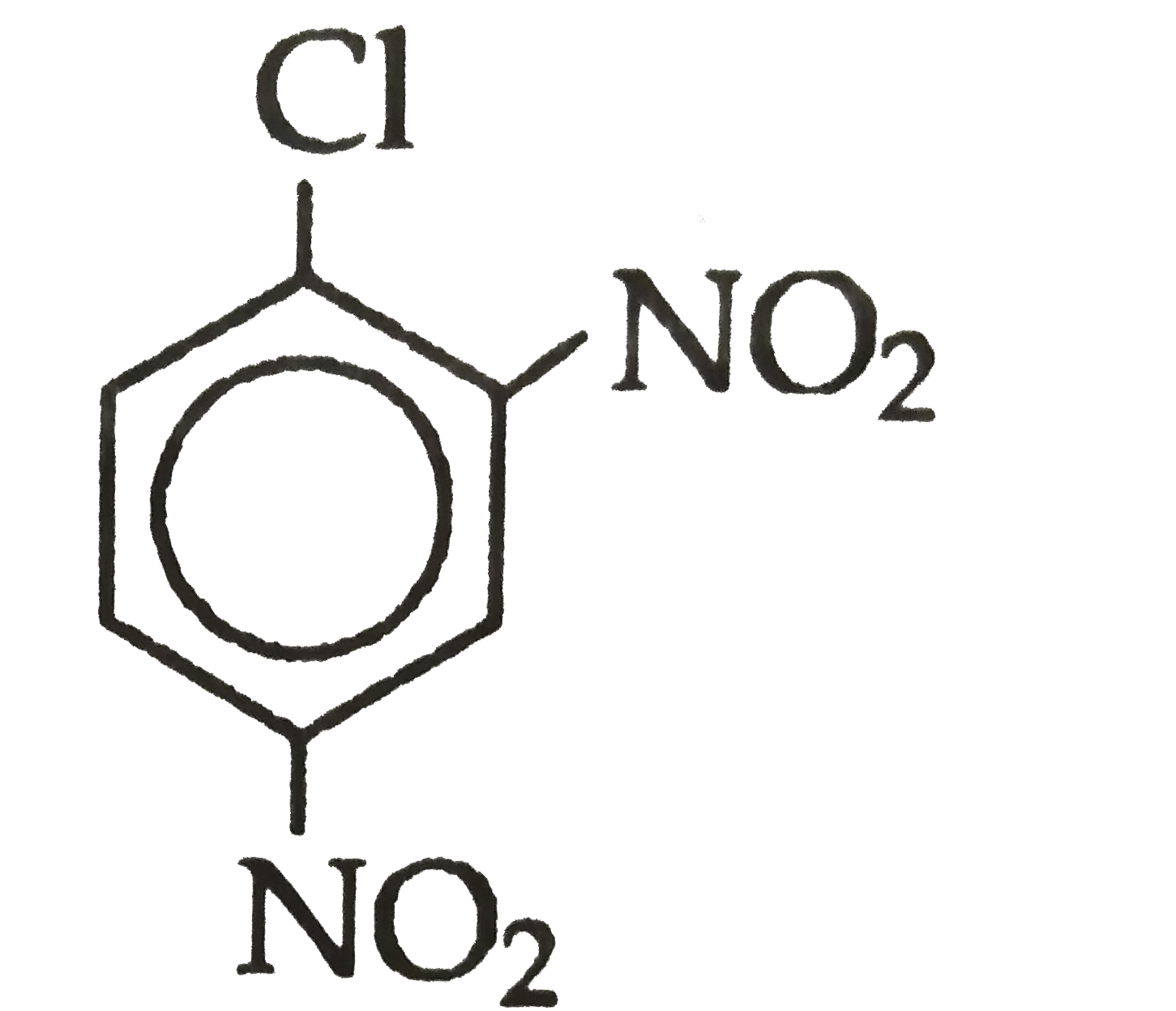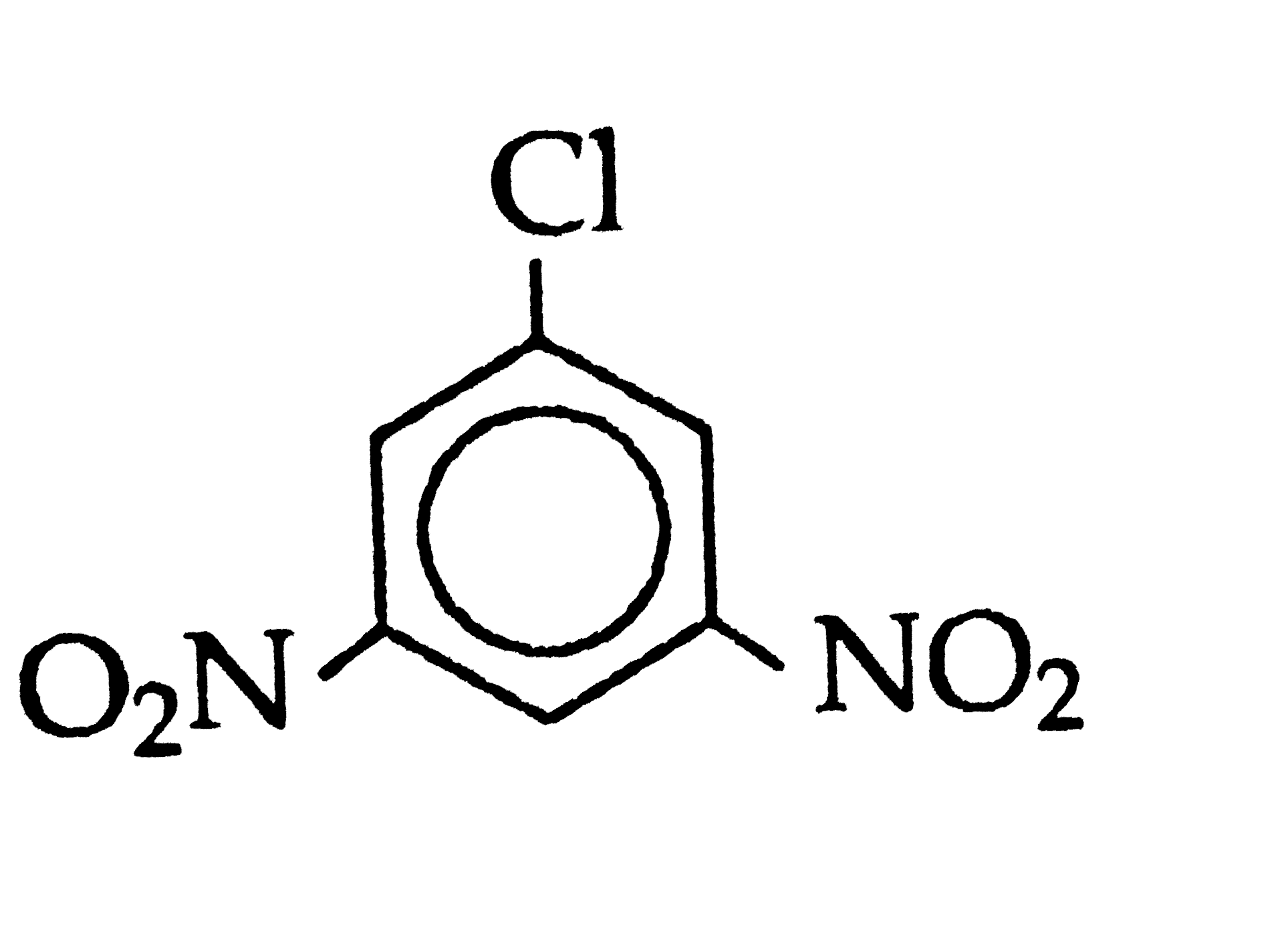Which of the following is least reactive in a nucleophilic substitution reaction?
A
CH3CH2Cl
B
CH2=CHCH2Cl
C
(CH3)3C−Cl
D
CH2=CHCl
Video Solution
Text Solution
The correct Answer is:D
The non reactivity of the chlorine atom in vinyl chloride may be explained from the molecular orbital point of view as follows. If the chlorine atom has sp2 hybridization the C – Cl bond will be a σ -bond and the two lone pairs of electron would occupy the other two sp2 orbitals. This would leave a p-orbital containing a lone pair and this orbital could not conjugate with the π bond of the ethylenic link. Thus two M.O.S. will be required to accommodate these four π electrons. Further more since chlorine is more electronegative than carbon, the electron will tend to be found in the chlorine atom has now lost full control of the lone pair and so, is less negative than it would have no conjugation. Since two carbon atoms have acquired a share in the lone pair, each atom acquires a small negative charge. Hence, owing to delocalisation of bonds (through conjugation), the vinyl chloride molecule has an increased stability. Before the chlorine atom can be displaced by some other group the lone pair must be localised again on the chlorine atom. This requires energy and so the chlorine is more firmly bound then has no conjugation occurred

|
Updated on:21/07/2023
Topper's Solved these Questions
- BOOK - ERRORLESSCHAPTER - GENERAL ORGANIC CHEMISTRY EXERCISE - ASSERTION AND REASON14videos
GENERAL ORGANIC CHEMISTRY
- BOOK - ERRORLESSCHAPTER - GENERAL ORGANIC CHEMISTRY EXERCISE - NCERT BASED QUESTIONS (Structural and Stereo Isomerism )99videos
GENERAL ORGANIC CHEMISTRY
- BOOK - ERRORLESSCHAPTER - ENVIRONMENTAL CHEMISTRYEXERCISE - ASSERTION & REASON7videos
ENVIRONMENTAL CHEMISTRY
- BOOK - ERRORLESSCHAPTER - HYDROCARBONSEXERCISE - ASSERTION & REASON18videos
HYDROCARBONS
Similar Questions
Knowledge Check
- Question 1 - Select One
Which of the following is least reactive in a nucleophilic substiution reaction
ACH2=CHCIBCH3CH2CICCH2=CHCH2CIsD(CH3)3C−CI - Question 2 - Select One
Which of the following is lest reactive in a nucleophilic .
ACH3CH2ClBCH2=CHCH2ClC(CH3)3C−ClDCH2=CHCl - Question 3 - Select One
Which of the following is more reactive in nucleophilic substitution reaction
A (##NIK_OBJ_CHE_XII_C10_E02_017_O01.png" width="30%">B C
C D
D
Which of the following is least reactive towards nucleophilic substitution?
View SolutionWhich of the following is most reactive toward nucleophilic substitution reaction ?
View SolutionWhich one is least reactive in a nucleophilic substitution reaction?
View SolutionWhich of the following is most reactive toward nucleophilic substitution reaction ?
View SolutionWhich of the following is most reactive towards nucleophilic substitution reaction?
View Solution
